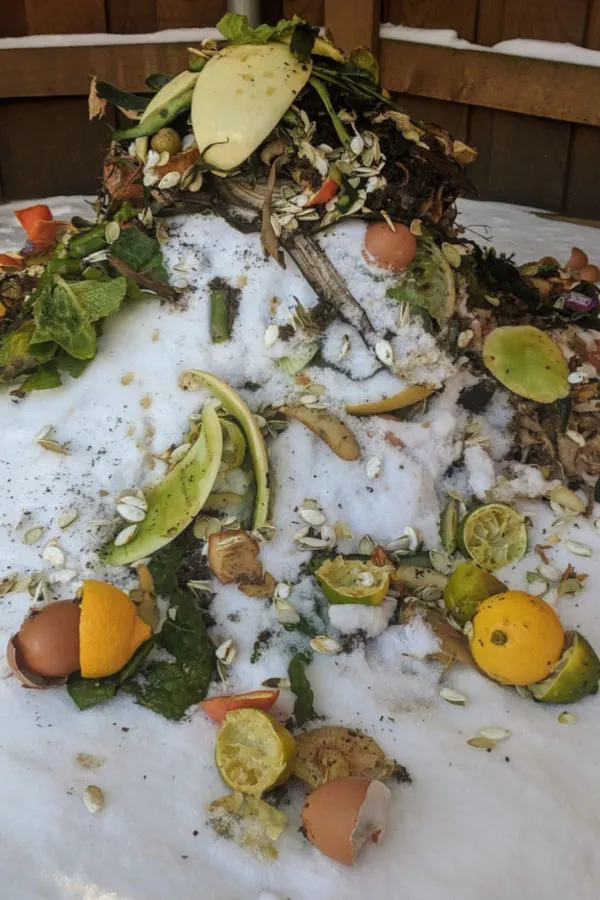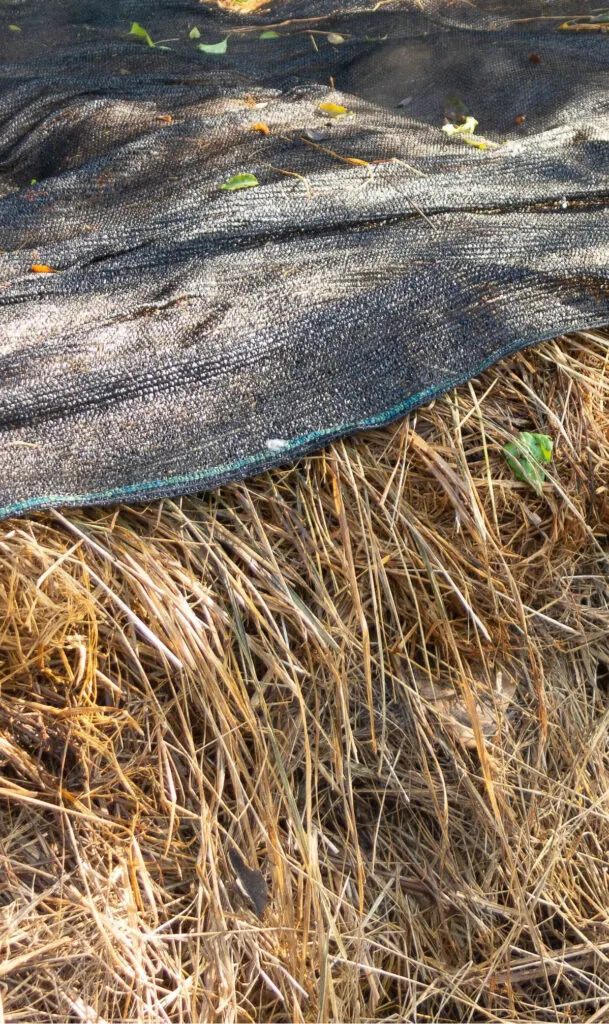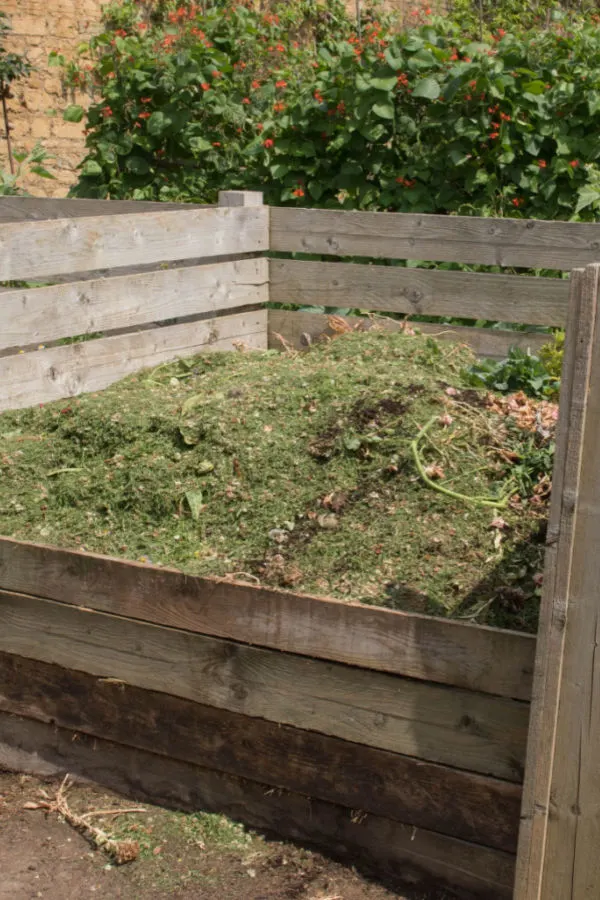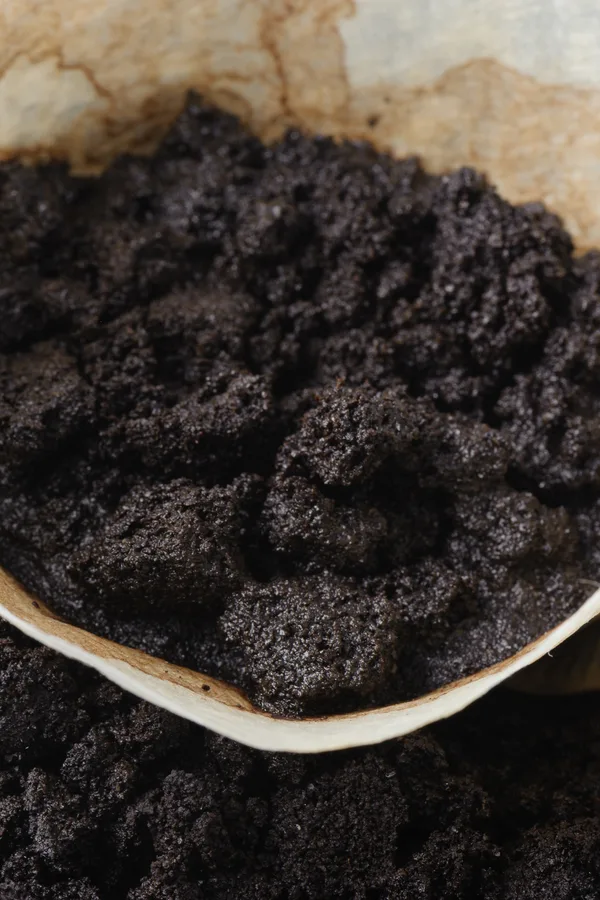When it comes to winter composting and trying to keep composting efforts going through the frigid and often frozen months, many gardeners simply put a stop to everything and wait for the warm weather to return.
In fact, the old saying of “out of sight – out of mind” is never more true than with a compost pile. In the spring, summer and fall, as gardeners work their flowerbeds, yards and gardens, the compost pile is often their best friend.
After all, it’s the perfect place to put all of those cuttings, kitchen scraps, leaves and more. Even better, the compost that comes from the pile helps immensely when planting flowers and vegetables. But as soon as garden season ends and winter arrives – quite often, so does the effort to keep composting.

But it doesn’t and shouldn’t have to be that way. Not only is it quite easy and possible to keep your compost pile going late into the winter months, you can also easily save and store additional ingredients to make next spring’s compost pile better than ever.
One thing is for sure, you can never have enough compost. And by keeping your composting efforts going strong all winter, your plants and soil will be healthier than ever next year. With that in mind, here is a look at a few simple tips and keys to keep composting like a pro this winter!
How To Keep Composting In The Winter
How To Keep Your Compost Pile Working Longer
First and foremost, don’t give up on your compost pile too early. In fact, it’s surprising how long a compost pile can continue working with just a little extra care. As organic matter decomposes, it naturally generates heat. And that alone can keep the core of a compost pile active long after the thermometer begins to drop below freezing.
But beyond a pile’s natural heat generation, there are a few things you can do to help keep your pile working stronger and longer. And it all starts with adding a layer of extra insulation on top!

Just as with keeping your home warm, a thick layer of insulation goes a long way in keeping heat in. For a compost pile, by simply placing a 12″ to 18″ blanket of straw or shredded grass clippings on top, you can prevent the pile from freezing over by weeks if not months.
To make that insulation even better, top your insulating layer of straw off with a heavy duty black tarp. The plastic tarp will keep snow, ice and rain from saturating a winter pile. It will also keep the moisture in the pile from drying out too quickly.
Using A Black Tarp – How To Keep Composting In The Winter
So why a black tarp? Because black absorbs heat. And whatever winter rays the sun provides, the black tarp will help heat up the pile underneath even more. Product Link: 9″ X 16″ Heavy Duty Black Tarp
Finally, make sure your pile is large enough to retain heat for as long as possible. A compost pile should be a minimum of 3′ x 3′ in order to generate enough heat for decomposition. A small pile simply won’t be able to hold enough heat to keep it from freezing, even on slightly cold nights.
Locate Your Pile For Success – How To Keep Composting In The Winter
In addition to insulating your pile, the winter location of your pile will play a huge role in its success too. Nothing will help heat up a pile more than sunlight. Even filtered sunlight on a cloudy day.

Piles or bins that are behind garages, fences or a wall have a hard time finding the sun during daylight hours. Because of that, they will be the first to cool down in the fall. And even worse, the last to warm up in the spring.
Of course, not all compost piles or bins can be moved. However, if your pile can be moved to a warmer spot during the winter, it can help immensely. Try to locate the front of your bin to face a southern facing location. This is one of the best ways to help heat it naturally through the winter.
Feeding & Turning Your Pile – How To Keep Composting In The Winter
Last but not least, to keep a pile going as long as possible, you have to feed it and turn it!
Without new materials to heat up your pile, it will slow down its heating capacity quickly. Try to add as many fresh vegetable scraps, egg shells and coffee grounds as possible. (See: Why To Save Your Coffee Grounds!) And if you happen to have chickens or rabbits, their “hot” manure is a great add too!
All of these are considered “greens” in a compost pile and will help to increase heat and decomposition. In addition, chop up those kitchen scraps as finely as possible. The smaller the compost pieces, the more quickly they will decompose and generate heat.

In the summer months, most gardeners simply throw their scraps on top of the pile. But in the winter, each time you add, dig the scraps into the middle of the pile. By doing this, you allow the fresh green material a better chance to heat up.
It also adds much needed oxygen to the core. As a bonus, digging fresh materials in through the winter also keeps your pile from being invaded by animals looking for an easy meal. And don’t forget to put that insulation layer and tarp back in place!
Turn That Pile!
Finally, turn the pile as often as you can. By turning the pile a few times each week and continuing to add kitchen scraps, coffee grounds, etc. – you add both oxygen and fuel to the mix.
If left to be, a compost pile in the winter will begin to freeze much faster from the outside in. The cold materials at the edge of the pile simply can’t get enough heat to compete with the air temperature. But by turning and adding scraps to the middle, you help keep the heat distributed for as long as possible.
Saving Compost Materials All Winter Long –
At some point, with enough frigid weather, even the most well-cared for compost pile will finally freeze. But that doesn’t mean you need to stop your composting efforts.
One of the biggest mistakes gardeners make is to stop saving compost materials through the coldest part of the winter months. Although you may have a frozen pile, you can easily save them for when it warms back up.
In the winter, we keep a few 5 gallon buckets with sealed lids tucked away just outside of our back door. As the snow and cold flies, we fill the buckets with scraps until a bit of warm weather allows pile access once again. It beats trying to find our way to a frozen pile. And, there is zero worry of odor, as the cold acts a giant deep freeze.
And whatever you do, don’t stop saving your coffee grounds and egg shells. They are two of the best compost ingredients around, and are also perfect for using in spring planting!

To save, simply place them in a large freezer bag in your freezer and add to them as needed. For the egg shells, crush or pulverize them before adding to save space. The freezer will keep both from molding, and in the spring, you will have plenty for your pile and your planting!
Here is to keeping your compost pile and your composting efforts going all through the winter. Happy winter composting, Jim and Mary.
Jim and Mary Competti have been writing gardening, DIY and recipe articles and books for over 15 years from their 46 acre Ohio farm. The two are frequent speakers on all things gardening and love to travel in their spare time.
As always, feel free to email us at thefarm@owgarden.com with comments, questions, or to simply say hello! You can sign up for our free email list in the subscribe now box in the middle of this article. Follow us on Facebook here : OWG Facebook. This article may contain affiliate links.
